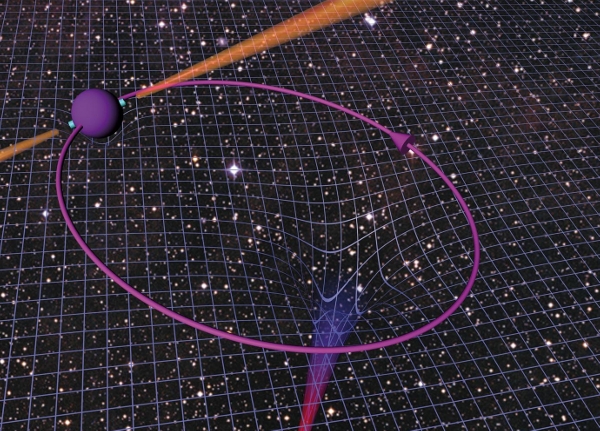|
A. Rushton & R. Ferdman: Stellar Black Holes & Pulsars
- Pulsars in orbit about a stellar mass BH
- Pulsars as probes for the galactic centre BH and intermediate mass BHs in globular star clusters
- Pulsars as probes for the cosmic gravitational wave background from merging SMBHs
- Accretion onto stellar mass BH
Stellar-mass black holes are the remnant core of massive stars formed after supernovae explosions or gamma-ray bursts. They are believed to represent the end stages of stellar evolution in the most extreme gravitational environments within galaxies. Furthermore, it has been observed that for some binary systems, the companion star can survive the formation of the black hole; hence it is possible to directly study the fundamental physics of black holes via their influences in binary systems. The aim of this working group is to study the effects of stellar-mass black holes on their surrounding environments. There are two key mechanisms that we will address: accretion onto a black hole from a companion star, and the timing of pulsars present in the extreme gravitational conditions in the vicinity of a black hole companion.
 Pulsar/black hole binary. Credit: Michael Kramer and SuW Pulsar/black hole binary. Credit: Michael Kramer and SuW
1) Accretion onto stellar-mass black holes
X-ray binaries (XRBs) have been found to be a source of high-energy Galactic astrophysics that have been well study only since the recent development of X-ray satellites. Due to their location within the Galactic plane they are highly extinct in the optical bands; however, infrared spectroscopy have now confirmed these sources of very high-energy X-rays contain compact objects such as white dwarfs, neutrons stars and black holes. It has also been discovered that the black hole XRBs are also a relative strong source of radio emission and resolved jets have been imaged using radio interferometers. Due to these morphological similarities with extragalactic quasars they have therefore been nicknamed microquasars. XRBs are unique laboratories to study these processes as their dynamic time-scales are many orders of magnitude shorter than extragalactic sources. Quasi-periodic oscillations (QPO) can study changes in the accretion disk, correlations between in the inflowing matter and outflowing jets can be monitored over multiple cycles of outbursts and superluminal radio knots have been observed after X-ray spectral state changes. However, in-order to better understand these phenomenological processes, coordinating simultaneous multi-wavelength monitoring campaigns remains one of the most difficult observational challenges.
2) Pulsar timing in the orbits of black holes
Pulsar observations provide a very unique opportunity to study black hole properties and physics, as well as to test gravitational theory and investigate several astrophysical processes in which black holes play a major part. The eventual discovery of a pulsar in a binary system with a black hole companion will be more than simply an observational milestone -- it will present the possibility of directly probing and testing the properties of the black hole as predicted by general relativity, such as the No-Hair theorem, and the Cosmic Censorship Conjecture. The discovery of such a system, although predicted to exist, has thus far not been made; however, the Square Kilometer Array is predicted to uncover a pulsar-black hole binary system once it is operational.
3) Interactions with other working groups
The above topics hold the potential for significant overlap with those in this and other working groups. In particular, microquasars can be scaled up to super-massive black holes with larger dynamic time-scales.The observations and precise timing of a collection of millisecond and binary pulsar systems distributed throughout the sky can be used as very long arms of a gravitational wave detector. Such a "pulsar timing array" can be used to directly detect the existence of a stochastic gravitational wave background, due primarily to the merger of massive black hole binaries in high-redshift galaxies. There is currently an ongoing effort by pulsar astronomy communities around the world to achieve this goal. Future instruments will enable the use of this pulsar timing array to proceed a step further and study the gravitational wave sources themselves, thus giving valuable insight into galaxy evolution. Pulsar observations thus can potentially be used to study the merger of super-massive black holes.
|
 Pulsar/black hole binary. Credit: Michael Kramer and SuW
Pulsar/black hole binary. Credit: Michael Kramer and SuW